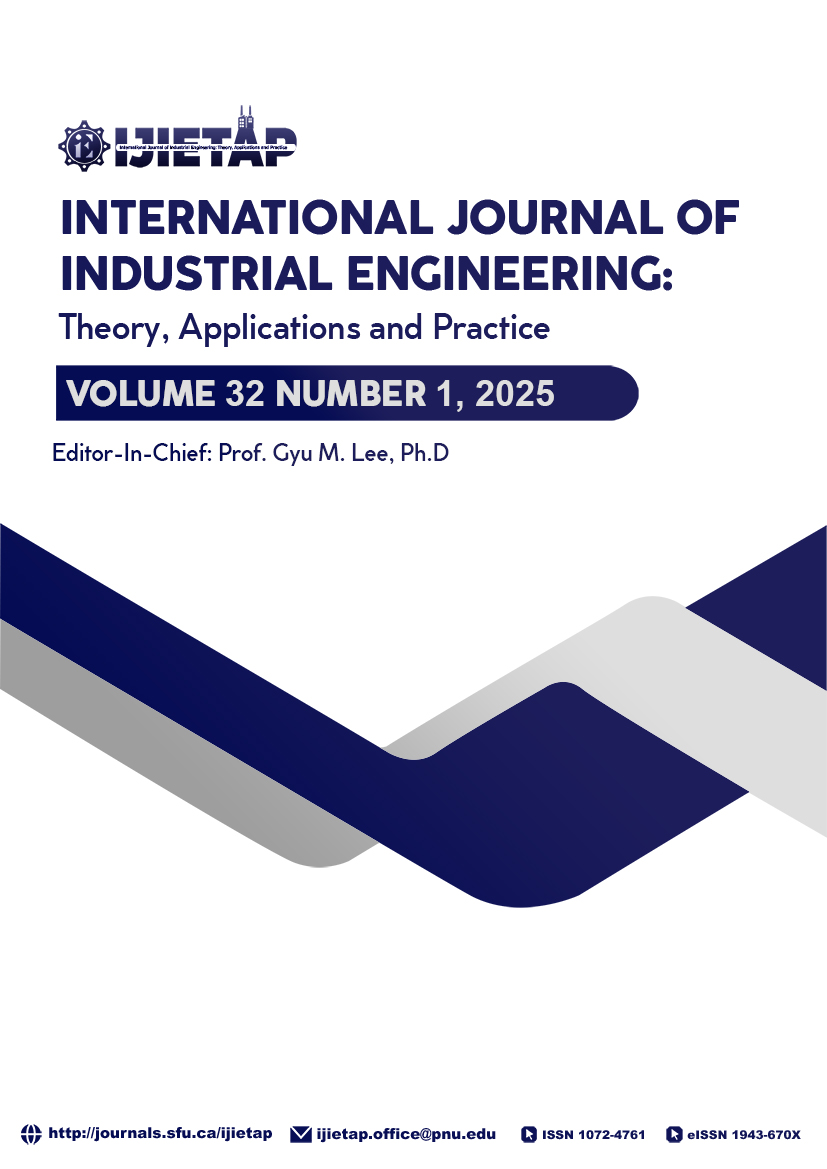Optimal Control Strategies for Adaptive Pricing in Ride-Sharing Services
DOI:
https://doi.org/10.23055/ijietap.2025.32.1.9921Abstract
Rideshare platforms are an example of economies of sharing where ride requests initiated by riders are fulfilled by car owners through the platform that connects both of them. When demand for a ride is initiated by the customer, the platform checks service providers' (car owners) availability and assigns a fare (ride price) that both the ride requester and provider should agree on to complete the transaction, and the ride service is fulfilled. In this research, optimal pricing strategies for ride-share platforms are considered. The optimal control approach is used to first develop differential equations to model the dynamics of the number of ride requests and for the price rate. Second, we model the total profit as a function of a linear revenue and a nonlinear cost. The optimal rate of change in the ride price is then obtained. Finally, a numerical example and extensive sensitivity analyses not only provide insights into the effect of the system parameter on the model but also lead to managerial implications to help companies determine the best price for each ride.
Downloads
Published
How to Cite
Issue
Section
License
The Author(s) must formally transfer each article's copyright before publication in the INTERNATIONAL JOURNAL OF INDUSTRIAL ENGINEERING. Such transfer enables the Journal to defend itself against plagiarism and other forms of copyright infringement. Your cooperation is appreciated.
You agree that the copyright of your article to be published in the INTERNATIONAL JOURNAL OF INDUSTRIAL ENGINEERING - THEORY, APPLICATIONS, AND PRACTICE is hereby transferred, throughout the World and for the full term and all extensions and renewals thereof, to INTERNATIONAL JOURNAL OF INDUSTRIAL ENGINEERING - THEORY, APPLICATIONS, AND PRACTICE.
The Author(s) reserve(s): (a) the trademark rights and patent rights, if any, and (b) the right to use all or part of the information contained in this article in future, non-commercial works of the Author's own, or, if the article is a "work-for-hire" and made within the scope of the Author's employment, the employer may use all or part of the information contained in this article for intra-company use, provided the usual acknowledgments are given regarding copyright notice and reference to the original publication.
The Author(s) warrant(s) that the article is Author's original work and has not been published before. If excerpts from copyrighted works are included, the Author will obtain written permission from the copyright owners and credit the article's sources.
The author also warrants that the article contains no libelous or unlawful statements and does not infringe on the rights of others. If the article was prepared jointly with other Author(s), the Author agrees to inform the co-Author(s) of the terms of the copyright transfer and to sign on their behalf; or in the case of a "work-for-hire," the employer or an authorized representative of the employer.
The journal does not provide the author copy of the final paper when it is published. The author(s) can make(s) a subscription to INTERNATIONAL JOURNAL OF INDUSTRIAL ENGINEERING - THEORY, APPLICATIONS, AND PRACTICE if they want to get the final paper that has already been published.
The journal is registered with the Library of Congress (ISSN # 1943-670X). All rights reserved. No part of this publication may be reproduced, stored in a retrieval system, or transmitted in any form or by any means, electronic, mechanical, photocopying, recording, or otherwise, without the prior written permission of the journal.
The author reserves patent and trademark rights and the right to use all or part of the information contained in the article in future non-commercial works.





